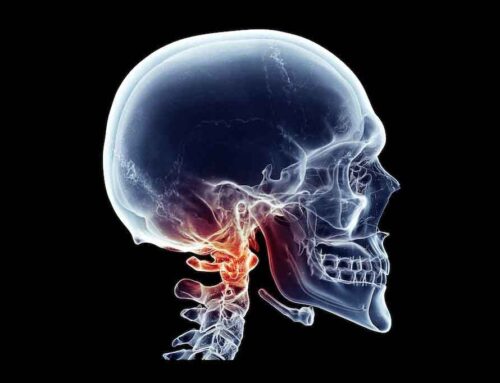TMJ stands for the temporomandibular joint, an important joint formed by your skull and your jawbone, using the muscles needed for you to talk and chew food. This very important joint opens and closes your moth, acting as a sliding hinge that allows for up and down, as well as side to side movement, for chewing, yawning, singing, etc.
As an important joint, there are a lot of things that can go wrong with it, resulting in discomfort, clenching, and teeth grinding. To experience TMJ pain, a disc of cartilage to keep your jaw movement smooth separates the bones of the joint. When the muscles become irritated the joints are displaced. It can also be caused by arthritis or another joint disease. The smoothness is interrupted, causing popping, clicking, muscle tenderness, joint tenderness, as well as the inability for you to open your mouth all the way.
Chronic sufferers experience headaches, dizziness, earaches, and even difficulty hearing. It can also lead to pain that radiates to the face, head, neck, and even shoulders from the severe clenching and grinding of the jaw.
TMJ Pain
If you’re experiencing TMJ Pain, there are three main types of pain you may be experiencing from within the joint:
1) Myofascial Pain: The pain in the muscles that controls the jaw and the connecting neck and shoulder muscles.
2) Internal Derangement: Meaning a dislocated or displaced disc.
3) Degenerative Joint Disease: Like arthritis, this disease occurs in the jaw joint, stiffening movements and causing pain within the joint.
You’re at risk for increasing your development of TMJ pain if you have suffered any recent jaw injury, stress, or grinding and clenching of your teeth while stressed or while sleeping.
Chiropractic Solution
Though TMJ pain may be unavoidable at times, through chiropractic support, you can keep it under control. Spinal manipulative therapy, soft tissue massage, and exercises have all been shown to reduce TMJ pain and symptoms through chiropractic oversight. Additionally, chiropractic solutions include intraoral myofascial release, which is a technique that releases the muscles surrounding the joint, accessing them from the inner side of a person’s cheeks. Dentists and the chiropractic team work in tandem to perform this kind of assessment and alleviation if deemed necessary.
Chiropractic will step in and focus on the relationship of the neck, spine, and back as it relates to the structure of the jaw in your skull. Although many assume that the solution to their TMJ can be found within the dental unit, the structuring of the jaw joint actually has nothing to do with dentistry at all. Connected to our spinal system, you can have your TMJ aligned and monitored through chiropractic support to ensure that pressure is being alleviated from your face, head, and teeth.



